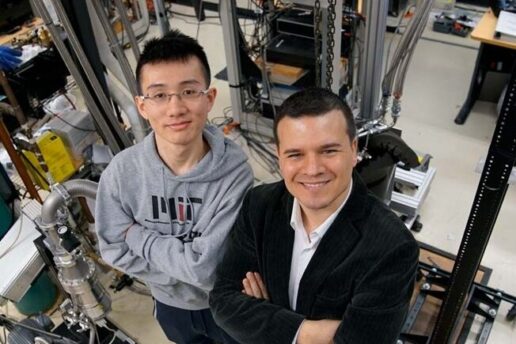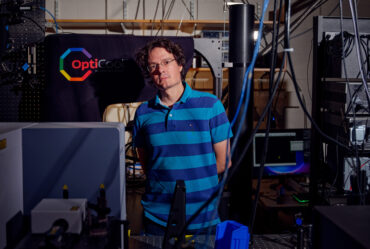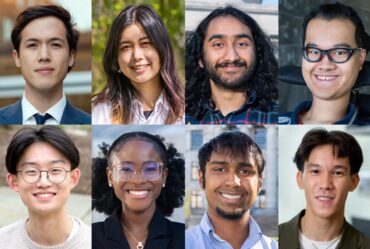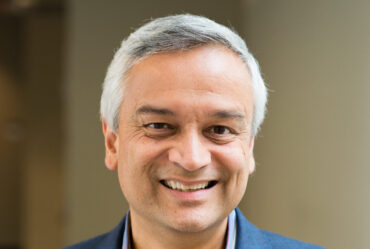
MIT research honored with Physics World “Breakthrough of the Year” awards
“Magic-angle” graphene named 2018 Breakthrough of the Year; first ionic plane and earliest evidence of hydrogen gas named to top 10 breakthroughs.
Three scientific and engineering advances led by researchers in the MIT community have been named to Physics World’s 10 Breakthroughs of 2018. One MIT-led discovery received the magazine’s top honor: 2018 Breakthrough of the Year.
Pablo Jarillo-Herrero, an associate professor of physics at MIT, was awarded the Breakthrough of the Year award for his leadership role in the discovery that graphene sheets can act as an insulator or a superconductor when rotated at a “magic angle.” Steven Barrett, associate professor of aeronautics and astronautics at MIT, was honored among the top 10 for his team’s success in building and flying the first-ever plane with no moving propulsion parts. Alan Rogers, a scientist at MIT’s Haystack Observatory, was also selected for the top 10 for his contributions to observations of the earliest evidence of hydrogen gas, tracing signals to just 180 million years after the Big Bang.
Physics World editors selected these discoveries based on criteria including the significance of the findings toward expanding knowledge and understanding, the importance of the work for scientific progress, and development of real-world applications.
Birth of “twistronics”
Jarillo-Herrero and his collaborators found that graphene, a two-dimensional layer of carbon atoms with a honeycomb-like lattice, can behave at two electrical extremes when rotated at a certain angle: as an insulator, in which electrons are completely blocked from flowing; and as a superconductor, in which electrical current can stream through without resistance. This discovery led to the development of “twistronics,” which Physics World reporter Hamish Johnston called “a new and very promising technique for adjusting the electronic properties of graphene.”
Jarillo-Herrero and his colleagues published their findings in two papers in Nature last March. Yuan Cao, a graduate student in electrical engineering and computer science who works in Jarillo-Herrero’s lab, was featured for this same research in the 2018 Nature’s 10, profiles of 10 people who mattered in 2018 based on their contributions to science.
Flying on ions
MIT’s Electric Aircraft Initiative, which Steven Barrett coordinates, is focusing on technologies that, in the long-term, could result in planes with near-silent propulsion, and low or no emission. The team’s ion aircraft, which resembles a lightweight glider, features an array of wires strung like horizontal fencing along and beneath the wing’s leading edge.
The wires act as positively charged electrodes, while similarly arranged thicker wires, running along the back end of the plane’s wing, serve as negative electrodes. Batteries supply 40,000 volts to positively charge the wires via a power converter. The wires attract and strip away negatively charged electrons from the surrounding air molecules, like a giant magnet attracting iron filings. The air molecules that are left behind are newly ionized, and are, in turn, attracted to the negatively charged electrodes at the back of the aircraft. As the newly formed cloud of ions flows toward the negatively charged wires, each ion collides millions of times with other air molecules, creating a thrust that propels the aircraft forward.
Barrett and his colleagues published their groundbreaking results in Nature in November.
Very old hydrogen
Alan Rogers, a scientist at MIT Haystack Observatory in Westford, Massachusetts, was honored for the observation of hydrogen gas from the very early universe with the Experiment to Detect the Global Epoch of reionization Signature (EDGES) collaboration. Using a small radio antenna located in remote western Australia, Rogers and colleagues were able for the first time to detect the earliest hydrogen signals yet observed: just 180 million years after the Big Bang. The discovery provides insight into the formation of the first stars via their interaction with the surrounding hydrogen gas and its absorption of cosmic background radiation, which was explained in a National Science Foundation (NSF) video.
“There was a great technical challenge to making this detection, as sources of noise can be a thousand times brighter than the signal — it’s like being in the middle of a hurricane and trying to hear the flap of a hummingbird’s wing,” says Peter Kurczynski, the NSF program officer who supported this study. “These researchers with a small radio antenna in the desert have seen farther than the most powerful space telescopes, opening a new window on the early universe.”
The EDGES collaboration is led by Judd Bowman of Arizona State University, and the research was published in Nature in February.


